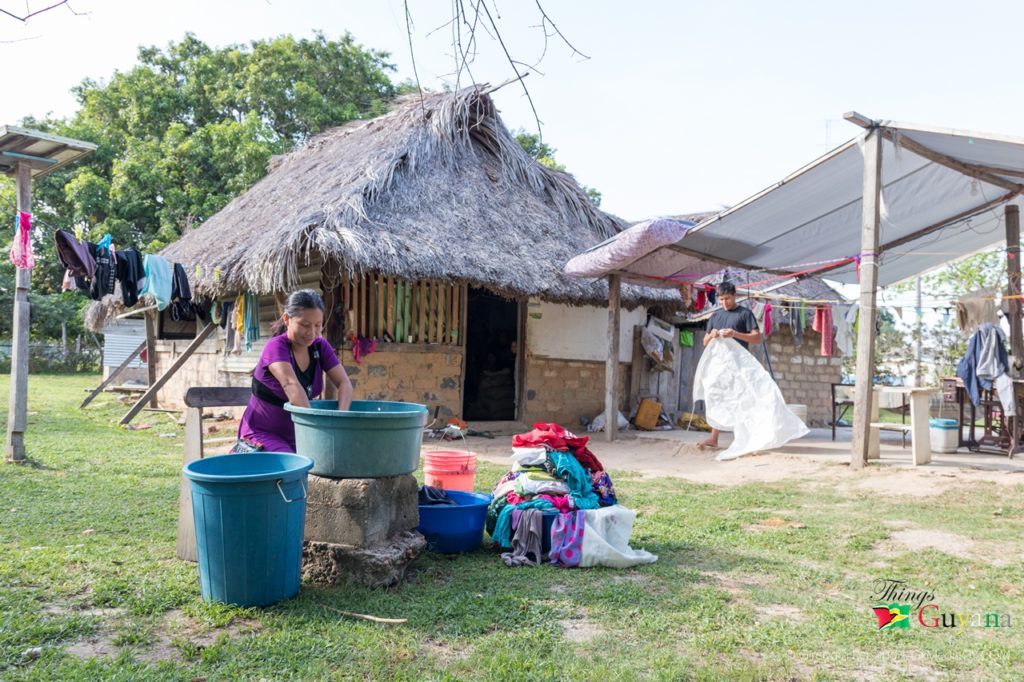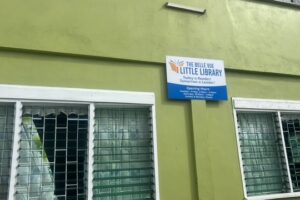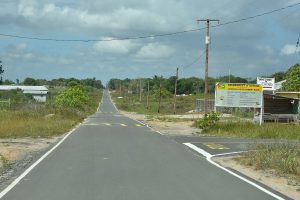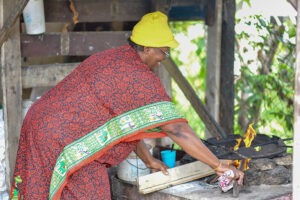
Amerindian Family/Traditional House – Laundry Time
Aishalton is an Amerindian village that is situated in the Rupununi savannah of southern Guyana, in the Upper Takutu-Upper Essequibo Region (Region 9) of the country. It is the administrative centre for the southern sub-district of Region 9.
In 2002, an official census recorded a population of 1,063 people in Aishalton, making it the second most highly populated village in Region 9 (after Lethem), and the most populated village in the southern sub-district. The village is predominantly inhabited by Wapishana peoples.
Makatau mountain, which is situated approximately 3 km outside Aishalton village, is one of Guyana’s most well-known archaeological sites. It is particularly well known for the numerous petroglyphs (known locally as “timehri”) that are found on Makatau and on rock-formations in the surrounding area. In the 1970s, the Guyanese anthropologist, Denis Williams, undertook a detailed archaeological study of the area.
His research uncovered 686 petroglyphs (known as the “Aishalton Petroglyphs”) that are mainly representations of humans, animals and plants as well as geometric arrangements. Williams estimated the date of the petroglyphs at 3000–5000 BCE, and described them as belonging to a specific “type” of petroglyph—subsequently referred to as the “Aishalton type”—that is defined by a distinctively figurative style.
Williams also discovered 84 stone tools that had been used in the carving of the petroglyphs. They were the first tools of this kind to be found in Guyana.
Article Adapted from Wikipedia, “Aishalton”, 2016.








1 Comment
This article is very inaccurate archaeologically …. it mixes the typology and description associated with multiple sites …